Martinique - Marin and day out with Beez - 16th -17th January

Nimue
Mon 17 Jan 2011 14:39
|
Some interesting facts about Martinique:- Discovery - Christopher Columbus discovered
Martinique in 1502 and is known as the Island of Flowers. The island
swapped between the French and English for a few more centuries until it
returned to French hands in 1814.
Economy â past/present Since the end of the
17th century sugar cane cultivation had grown considerably, but with the
regrettable consequence of the importing of African slaves. By the end of
the 18th century the majority of the population had become of African
stock. Martinique is now largely dependent upon sugar, bananas and
pineapples, although considerable emphasis is being placed on developing
tourism.
Shocking - St Pierre, the first town and the
economic centre was literally raised in 1902 by the eruption of Mont
Pelee. This terrible catastrophe caused 30,000 deaths and changed the
economic and social situation of Martinique, as the majority of the European
population died in the eruption.
Dangerous - The fer-de-lance, is an
aggressive pit viper found in overgrown and brushy fields in Martinique and itâs
bite is highly toxic!
Marin is tucked into the bottom of its
cul-de-sac and owes most its economic development to its marina. The
checking in/out process on most of the French islands is different to other
Caribbean islands, as you are required to complete your details on a computer,
print them off and then hand the paperwork to the immigration officer; typical
of the French!
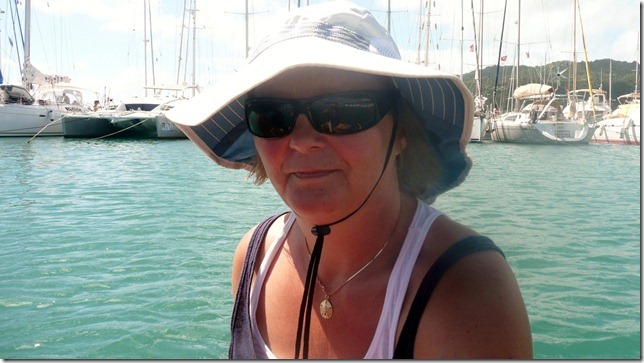 Anne concentrating on navigating everyone safely
to the Marin dinghy dock
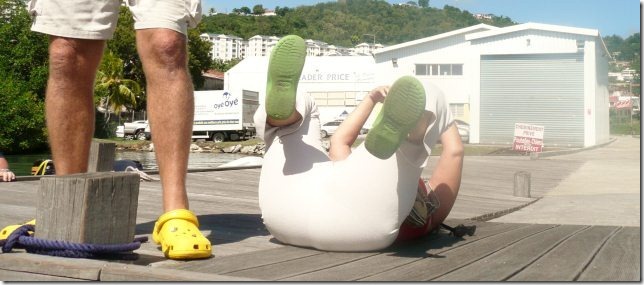 Going shopping, but Pepe lost her balance and
ended up doing her DYING INSECT impression!
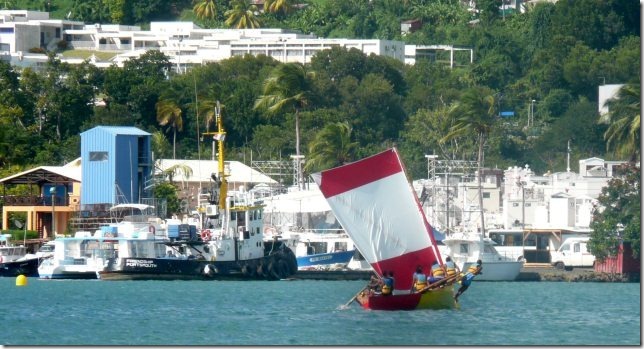 One of the local yole sailing boats -
looking a bit unsteady
We hired a car with Beez Neez for the day and Bear kindly
offered to drive us around the island. We drove north to visit the famous
former capital of St Pierre, just a few kilometres south of Mont Pelee, the
still active volcano that destroyed the town in just 10 minutes! After
several warning signs it eventually erupted into a glowing burst of superheated
gas and burning ash, with a force 40 times stronger than the nuclear blast over
Hiroshima! Between the suffocating gases and the fiery inferno, 30,000
inhabitants lost their lives within minutes. However, out of 3 survivors
there was a prisoner named Cyparis, who escaped with minor burns and later
joined the PT Barnum circus where he toured as a sideshow act!
The prison lies besides the remains of the once splendid and
celebrated theatre of St-Pierre and we were able to walk up the broad sweep of
steps to the entrance and see the huge stage area. Across the road we paid
a small entrance fee into the Musee Volcanologique to see an interesting
collection of objects and documents of life before 1902 and the remains of the
disaster: including household metal and glass objects charred and deformed by
the extreme heat.
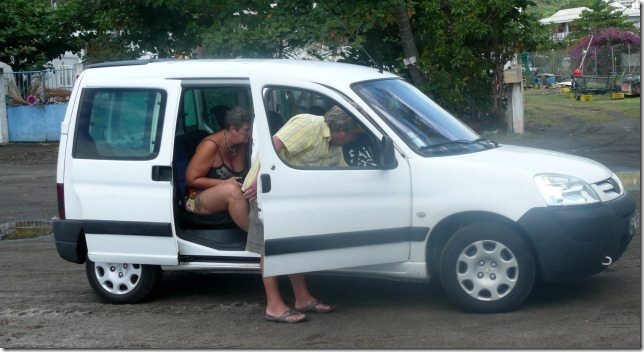 During this stop Michael was trying to stop the
recently filled up dinghy fuel tank from leaking into the hire car!
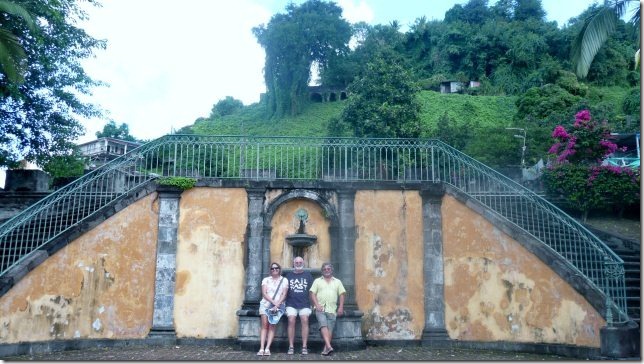 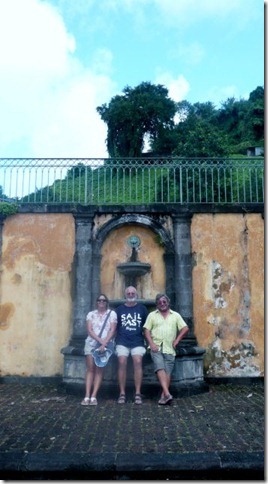 Anne, Bear and Michael at the stairs to the St
Pierre theatre entrance
 The remains of the theatre walls
 Remains of the prison
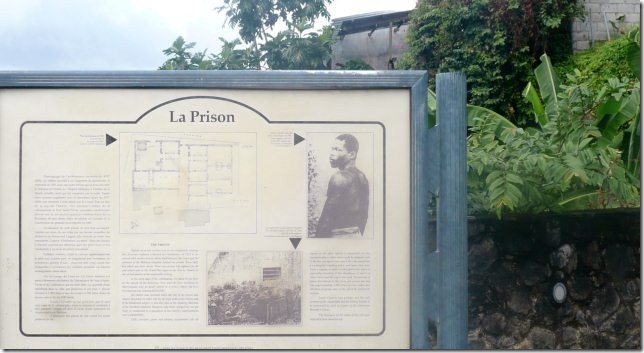 The story of Cyparis, one of the earthquake
survivors.
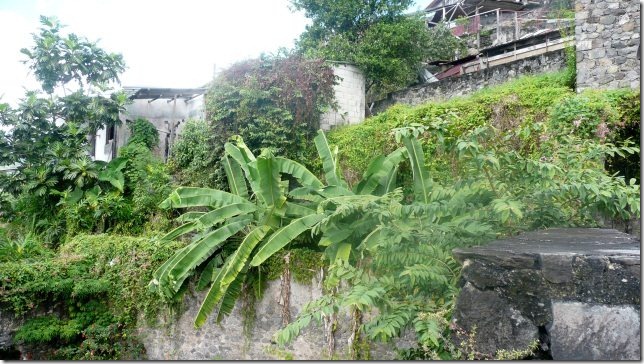 The ruins covered in lush green
vegetation
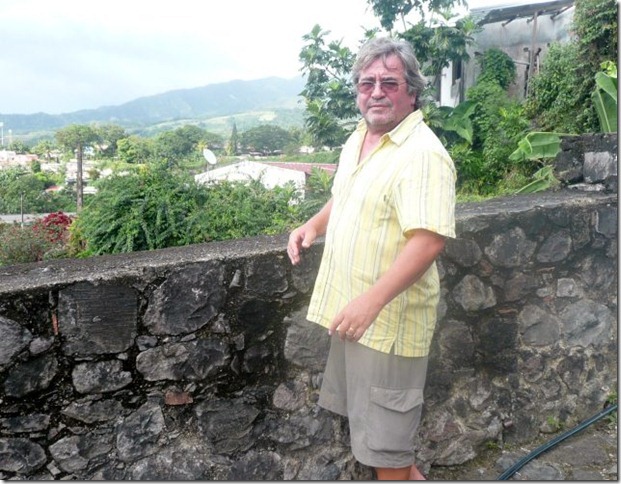 Michael and the still active Mount Pelee in the
distance
As part of my pathfinder duties, I directed everyone in
between the rain showers to the covered market, where we all had an indifferent
12EC$ lunch at Le Guerin, a not so good recommendation from the Lonely Planet
guide.
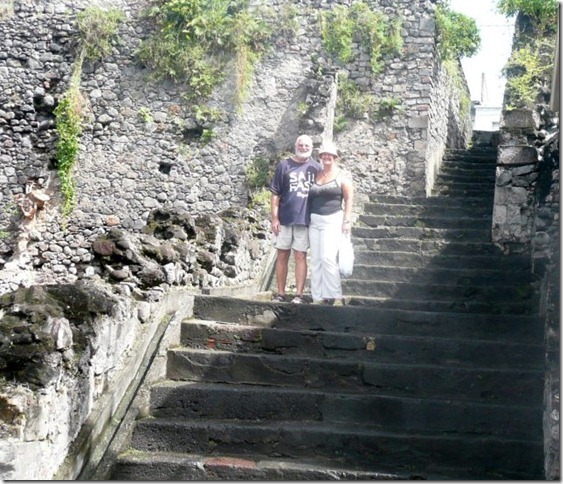 Pepe and Bear in St Pierre and making their way
for lunch
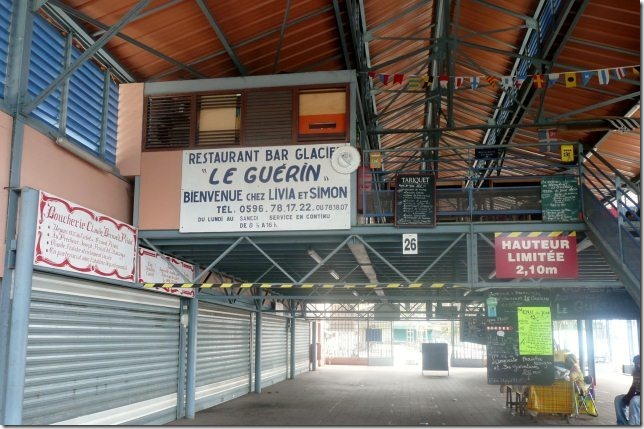 The ânot so goodâ restaurant, Le Guerin, in the
covered market
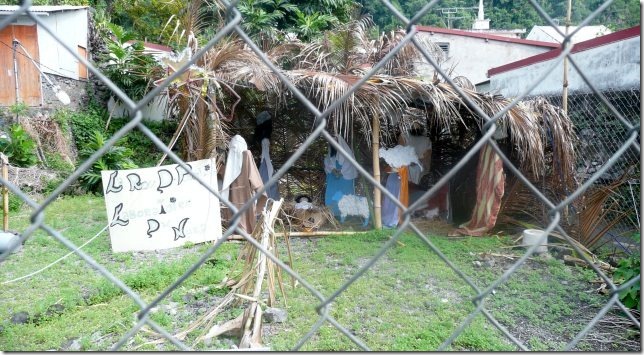 Christmas nativity scene still being displayed
in St Pierre in Mid-January
Our drive then followed a route through the beautiful lush
rainforest of tall tree ferns and roadside bamboo and after a quick stop to view
the Atlantic rollers on the east side of the island we managed to stumble across
the Musee du Rhum St James. The museum is set in a beautiful
colonial home on the site of St James planationâs working distillery,
where nicely laid out photos show how sugar cane becomes rum. Locals say
this is the place to try some of the best rums Martinique has to offer, so we
naturally had to do some tasting to check if this statement was true! A
quick detour to the Musee de la Banane where everything banana was available
including banana ice cream â yummy! Back to Marin via Carrefour and a
great day was had by all.
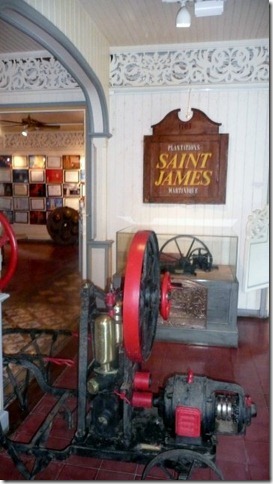 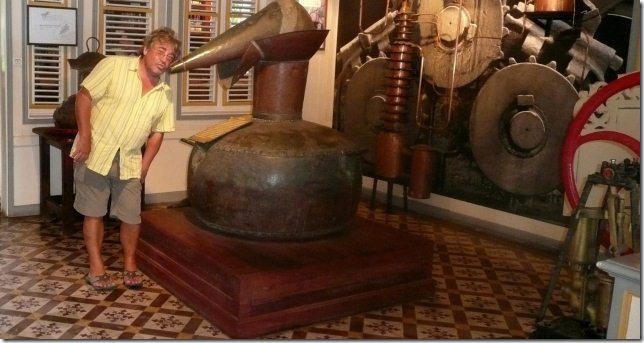 St James rum museum, with Michael next to one of
the distillers
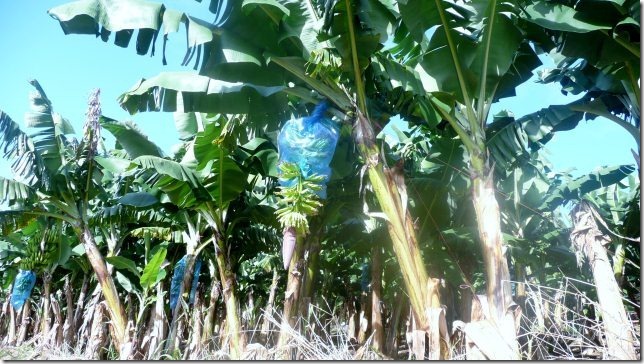 What a lovely bunch of bananas;
above/below
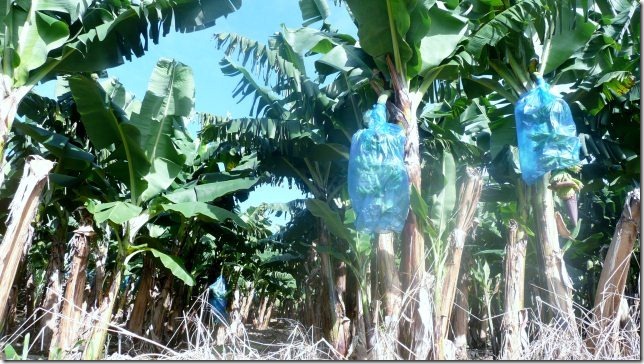 Next port of call, Fort de France. A 20 mile sail around to
the west coast of Martinique.............
|